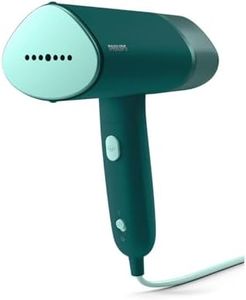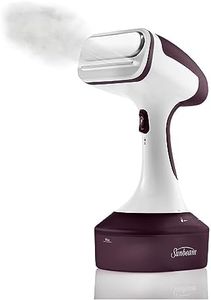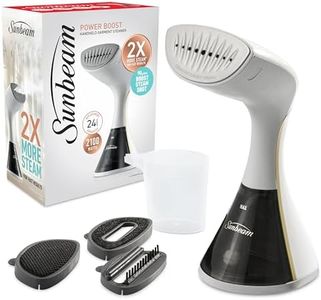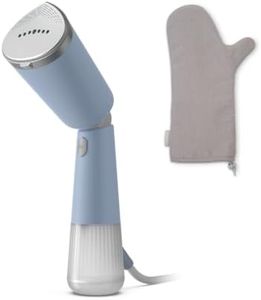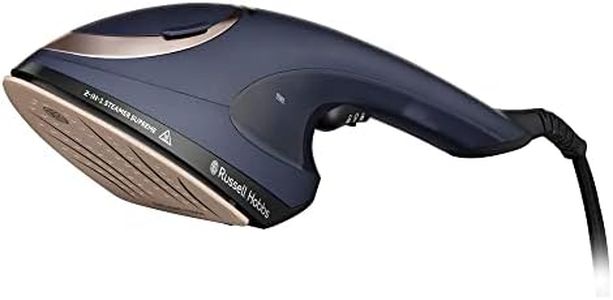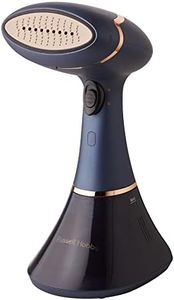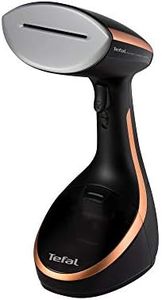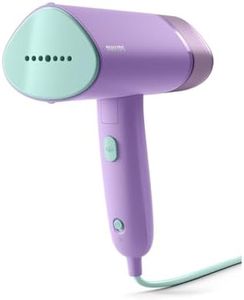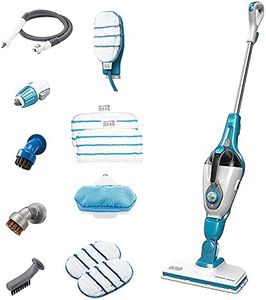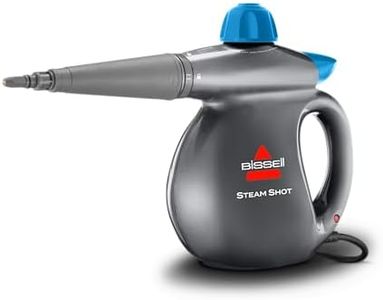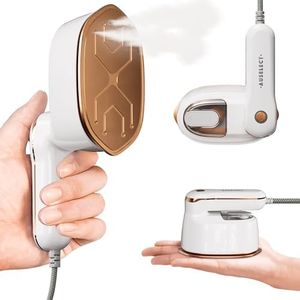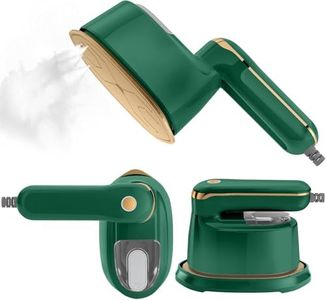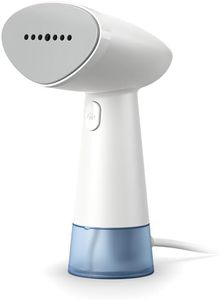We Use CookiesWe use cookies to enhance the security, performance,
functionality and for analytical and promotional activities. By continuing to browse this site you
are agreeing to our privacy policy
10 Best Handheld Steamers
From leading brands and best sellers available on the web.By clicking on a link to a third party's website, log data is shared with that third party.
Buying Guide for the Best Handheld Steamers
Choosing a handheld steamer can make clothes care quicker and more convenient, especially if you’re looking to freshen up garments without the need for an ironing board. The right handheld steamer will depend on your typical usage—whether you want a travel-friendly model, need to steam multiple pieces at once, or just need a quick fix for light wrinkles. Understanding the main features will help you find a steamer that’s easy to use and matches your lifestyle.Water Tank CapacityThe water tank capacity refers to how much water the steamer can hold, which affects how long you can use it before needing a refill. Small-capacity tanks (around 4-6 ounces) are great for quick touch-ups or travel since they keep the device lightweight, but they’ll only provide a few minutes of steaming. Medium tanks (7-10 ounces) offer a good balance of portability and steaming time, making them suitable for a few garments in one session. Large tanks (10+ ounces) allow for longer use but make the steamer heavier, which can be tiring if you’re holding it for a while. Think about how many items you usually steam in one go and whether portability or longer use without refilling matters more to you.
Heat-up TimeHeat-up time is the amount of time the steamer takes to be ready for use after you turn it on. Fast heat-up times (15–30 seconds) are perfect for busy people who need a quick solution. Mid-range heat-up times (30–60 seconds) are common in most models and are generally convenient for regular home use. Longer heat-up times (over a minute) might be acceptable if you’re less concerned about speed and more focused on other features. If you often steam right before heading out or have limited time, opt for a model with a faster heat-up.
Steam OutputSteam output measures how much steam is produced per minute, usually indicated in grams or milliliters. Low steam output is effective for delicate fabrics or light use, while medium output is suitable for everyday clothing. High output models are needed for heavy fabrics or tougher wrinkles, like those in linens or thick cottons. If you plan to de-wrinkle heavy or multiple garments often, a higher output model will be more efficient; for occasional or delicate use, a lower range will be fine.
Size and WeightSize and weight are important because they affect comfort during use and portability. Lightweight and compact steamers are ideal for travel or quick touch-ups, but they may have smaller tanks and less power. Bulkier steamers usually offer longer steaming times, but can be harder to handle for extended periods. Decide whether you’ll mostly use it at home or need to take it on the go, and choose a model that feels comfortable to hold.
Power and WattagePower, measured in watts, affects both how fast your steamer heats up and how powerful the steam output is. Lower wattage models (below 1000W) are often lightweight and suitable for easy tasks, while mid-range wattage (1000–1500W) provides a balance between heating speed and effectiveness for general use. Higher wattage (over 1500W) delivers strong steam for larger loads or tough fabrics. Match the power level to your intended use: occasional, light use or frequent steaming of thicker textiles.
Ease of Use FeaturesEase of use features include things like ergonomic handles, easy fill tanks, long power cords, and attachments such as fabric brushes or lint removers. These features can make steaming more convenient and tailored to your needs. If you prefer a hassle-free experience, look for features that simplify operation and maintenance, especially if you plan to use your steamer regularly.
